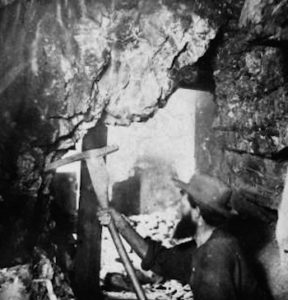 BitOoda, an international digital asset financial technology & services platform offering risk management solutions, best-execution brokerage & expert market analysis, notes that Bitcoin declined 3.3% week-on-week, settling at around $48,830 as of midnight UTC on December 15, but has now dropped further to about $46,300 at the time of writing.
BitOoda, an international digital asset financial technology & services platform offering risk management solutions, best-execution brokerage & expert market analysis, notes that Bitcoin declined 3.3% week-on-week, settling at around $48,830 as of midnight UTC on December 15, but has now dropped further to about $46,300 at the time of writing.
As noted by BitOoda, several Bitcoin (BTC) miners have “outperformed Bitcoin YTD as well as today, but most trail BTC since 9/30.”
As mentioned in the update from BitOoda, Saturday’s difficulty adjustment saw “an increase of 8.3%, equivalent to a target Hashrate of 172.5 EH/s.”
The report also mentioned that the ProShares BITO ETF “trails BTC by 2.2% since fund inception; the fund launch correlates strongly with increased CME open interest, as AUM increased rapidly in the first week from launch.”
The report further noted that the CME Futures curve has “flattened at the front end, inside the liquidity window.” The report added that the current open interest “fell 1.4% WoW to 13,250 lots.”
The update from BitOoda added that the Commitment of Traders data from 12/7 “shows that spreading positions increased, while commercial players reduced their longs.” The non-commercial player net length on the CME is “now short just 117 lots, compared with 729 lots (the YTD minimum) two weeks prior,” the report added.
The update also mentioned that the total BTC earnings “per PH/s are ~5.26 mBTC, down from ~5.69 mBTC / PH/s last week largely driven by the higher target hashrate (1mBTC or milliBTC = 1/1000 BTC).”
The report added that the transaction fees “gained 26 bps WoW to 1.3% of miner rewards, or 0.08 BTC per block.”
Meanwhile, the “Mempool” shows “low congestion levels, with 3,912 pending transactions.”
The BitOoda team also noted:
“We continue to assess congestion will likely stay low for awhile with the falloff of trading activity in Asia, where a higher percentage of on-exchange transactions result in on-chain transactions, as well as increasing Layer 2 adoption, such as the Lightning Network.”
They further revealed that Bitcoin mining revenue “fell to $257 / PH/s per day and $280/MWh, near the lows over the past 30 days, driven by both price and the higher difficulty.”
As noted in the update, miner economics are “on track to come in modestly better than our previous year-end estimate.” The current block rate “suggests that the actual year-end Hashrate will fall short of our prior 198EH/s forecast, and will likely be closer to 170–180EH/s,” the report added.
The BitOoda North American Hash Spread™ “fell 4.8% from $266 to $254.” As covered, the company defines the BitOoda Hash Spread™ as “the difference between the cost of power per MWh and the Bitcoin mining revenue per MWh.”
The company explains that this “gives miners a quick sense of the surplus generated by their business to cover personnel, overhead, depreciation, and profit.” The weighted average around-the-clock U.S. wholesale industrial power price (5 markets) “fell to $26.60 / MWh, leading to an aggregate spread of $254.”
The report added that older-gen S9-class devices “saw their Hash Spread™ up ~13% to $72/MWh. S17-class devices, the bulk of the installed base, saw a hash spread of about $150/ MWh.”
It now “takes 174 MWh to mine 1 BTC using S19-class rigs, while S17-class machines consume 277 MWh, and S9-class, 495 MWh.” The report pointed out that this “translates into $4,633 in power expense to mine 1 BTC with S19 class rigs, and $13,164 using S9 rigs, a ~73% contribution margin, excluding labor.”
Here are the main takeaways:
- Mining retains attractive margins, with a downside to our prior Hash estimates helping maintain margins despite price declines.
- However, most miners continue to underperform Bitcoin
- Net length improved to short 117 lots, recovering from short 729 lots two weeks ago

